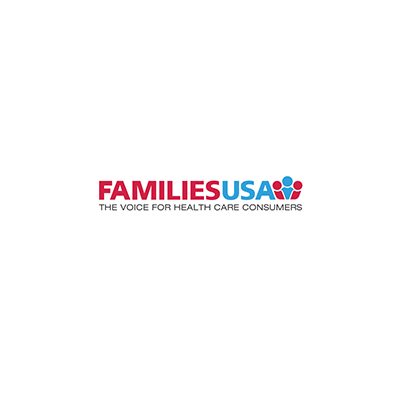
Responding To COVID-19: Using The CARES Act’s Hospital Fund To Help The Uninsured, Achieve Other Goals
04.17.2020
NOTE: This blog was originally published in Health Affairs on April 11, 2020.
The Coronavirus Aid, Relief, and Economic Security (CARES) Act, signed by the President on March 27, 2020, includes a $100 billion fund intended to support health care providers. This money, channeled through the longstanding but historically small Public Health and Social Services Emergency Fund (PHE Fund), will reimburse eligible providers for “health care related expenses or lost revenues that are attributable to coronavirus.” These funds are intended to stabilize hospital finances as they face short term revenue reductions due to the cessation of non-urgent procedures and increased costs for items like personal protective equipment and personnel.
Congressional leadership has indicated it may consider increasing available funds, but even at current levels this is a sizable sum. It equals roughly one month of total U.S. hospital operating revenue.
The statute provides little guidance on how to allocate the money or what conditions should attach to its use. Funding can help pay a wide variety of expenses, including construction costs, leases, medical supplies, and some personnel costs. Providers must maintain records, the inspector general of the Department of Health and Human Services (HHS) must conduct an audit within three years, and HHS is encouraged to distribute the funding quickly. Other details are left to the agency’s discretion.
In recent days, HHS made important announcements about the fund’s use. After choosing not to create a COVID-19 special enrollment period (SEP) in the healthcare.gov platform that serves 38 states, the Trump administration decided that a portion of the PHE Fund will “cover providers’ costs of delivering COVID-19 care for the uninsured.” The fund will pay such costs at Medicare rates, and providers may not bill uninsured patients for the balance. HHS also announced that they would be immediately routing $30 billion from the fund to hospitals, allocated in proportion to Medicare revenue.
In this post, we explain why a COVID-19 SEP and other policies to expand access to comprehensive health coverage remain necessary, even with the PHE Fund financing a portion of care for uninsured COVID patients. We then outline how HHS should structure the PHE Fund’s support for such patients to provide them with effective assistance. Finally, we analyze how HHS can achieve other important objectives with the Fund that do not directly involve caring for the uninsured.
Access To Comprehensive Coverage Remains Necessary
Effectively addressing the COVID-19 crisis and the accompanying economic downturn requires significantly improving access to comprehensive coverage. Nearly 30 million people, 9 percent of Americans, lacked coverage before the pandemic began; the widespread economic dislocation that generated 17 million claims for unemployment insurance during the last three weeks will cause further coverage losses. The Economic Policy Institute estimates that 3.5 million workers may have lost employer-sponsored insurance (ESI) during those two weeks alone, and Health Management Associates projects that up to 11 million people could join the ranks of the uninsured under a worst-case scenario for the declining economy.
The Advantages Of Comprehensive Coverage Over Limited, Stop-Gap Funding
Policies that help the uninsured obtain comprehensive coverage will be much more effective at ensuring people can access all needed care without financial hardship than the PHE Fund operating alone. Health insurance makes consumers significantly less likely to delay seeking necessary care because of cost. That can enable the prompt detection and early treatment of COVID-19. By contrast, limiting payment to hospital care means that many patients will delay seeking care until their conditions deteriorate to the point where hospitalization is required. This can endanger patient health, delay COVID detection, and needlessly spread the disease.
Further, coverage for prescription drugs and physician visits lets people experiencing illness stay home, seek diagnosis, and obtain treatment without coming to the hospital. That reduces the demands placed on a hospital system that, in much of the country, is severely under-resourced during the current pandemic. If the uninsured are covered only through the PHE Fund’s payment of inpatient services, many will have little choice but to seek hospital care, even when community-based services could have sufficed with comprehensive insurance.
In addition, patients who have comprehensive insurance retain coverage after moving from the hospital, enabling ongoing care. In the absence of such coverage, hospitals may feel obliged to prolong the inpatient stays of uninsured COVID patients because such patients are unlikely to have the resources needed to pay for needed care post-discharge. Alternatively, patients may leave the hospital while they continue to need care they cannot access, risking serious complications. But keeping people in the hospital unnecessarily undermines the goal of maximizing hospital system capacity.
COVID-19 patients often also experience other related illnesses. Comprehensive insurance that covers services for all conditions relieves COVID-19 patients of the fear that if they reach the hospital and turn out to have a different illness, they could be forced to pay exorbitant sums. Those fears could lead some who do not know that they have COVID-19 to delay care, further slowing detection and accelerating the pandemic’s spread.
Only comprehensive coverage can assure people that, no matter what health condition is ultimately responsible for symptoms, or what form of treatment turns out to be necessary, patients will be financially protected. Stop-gap funds limited to particular institutions and conditions can never create that certainty; thus, they neither achieve key public health objectives nor protect patients from financial and medical harm.
The Need For Additional Coverage Policy
Because of the ACA, many people losing job-based coverage will qualify for Medicaid or subsidized marketplace coverage. But additional action is needed to fill remaining gaps in the ACA framework and ensure that people can access these options, notwithstanding the administration’s announcement about using the PHE Fund to fund uninsured COVID-19 patients’ receipt of hospital care.
A national SEP allowing uninsured Americans to enroll in marketplace coverage remains a vital priority. Several studies suggest that the SEP reserved for workers who lose ESI has failed to reach most of its intended target population; a streamlined COVID-19 SEP would overcome some of the procedural requirements that can inhibit enrollment into the ESI-loss SEP. Moreover, 13 state-based health insurance exchanges (all states exchanges except Idaho) have enacted such an SEP and achieved notable early successes.
Of course, creating a SEP allowing enrollment into federal exchanges is just one of many important steps policymakers could take to broaden the circle of coverage during the current pandemic. From encouraging states to expand Medicaid, to funding intensive application assistance, to improving financial assistance in the individual market, straightforward policy options could reduce the number of uninsured and give patients the certainty this crisis demands. Indeed, many of these policies were already contained in legislation introduced in the House related to COVID-19, and federal agencies could take important steps even without additional legislation.
At the same time, even if all of these steps were taken, some people would still fall through the cracks and remain uninsured. A last-resort mechanism like the PHE Fund to cover COVID-19 hospital bills for these patients is an appropriate and important step to avert hardship, but this fund should not be portrayed as a substitute for comprehensive coverage.
Effectively Using CARES Act Hospital Funding To Help The Uninsured
For the PHE fund to effectively serve as a last-resort payer, without compromising its effectiveness in stabilizing hospital finances, HHS should adhere to several principles in allocating and distributing funds.
Given the significant financial pressure currently facing hospitals, rapid payment from the PHE Fund matters. The statute directs HHS to use the “most efficient payment systems practicable to provide emergency payment.” Hospitals have requested that HHS use the existing Medicare payment infrastructure, through regional Medicare Administrative Contractors (MACs), to make these payments, and that the agency direct funding to each hospital based on a structured formula.
Under this vision, each hospital would receive a known allotment (either all at once or in stages) and accrue allowable costs “against” that amount. This would avoid the need for hospitals to bill the fund or otherwise seek reimbursement for specific allowable costs. Structuring payments as allotments paid through Medicare would move money quickly and predictably without significant administrative burden, which is important in the current environment. Indeed, this is the approach HHS has taken for disbursement of the first $30 billion from the fund, calculating allotments based on total Medicare revenue for the hospital.
HHS has indicated additional funding is coming, but has not specified how it will be paid or how it interacts with the agency’s statements about covering costs for the uninsured. HHS could maintain an allotment-based methodology for dispersing the remaining dollars, while still ensuring that these dollars protect the uninsured.
The department could create an allotment formula that considers a hospital’s likely uncompensated caseload, along with other factors discussed below. To receive its allotment, a hospital would be required to accept specific conditions, including those regarding patients with potential or diagnosed COVID-19. Put differently, the hospital would not seek Fund reimbursement for specific COVID-19 uninsured patients, and would instead receive lump sum payments for multiple purposes, in exchange for which the hospital would assume specified duties in caring for the uninsured. These conditions could attach to any disbursement from the fund, including the $30 billion already announced, or only to newly announced amounts.
HHS Should Impose Certain Requirements On Hospitals That Access The PHE Fund
HHS has stated that, thanks to the PHE Fund, uninsured COVID-19 patients can “receive treatment in a hospital and never have to worry about the bill.” To achieve this objective, HHS must oblige hospitals to meet specific requirements.
Coverage enrollment assistance
HHS could require hospitals to help uninsured patients qualify for and enroll in Medicaid and other insurance affordability programs for which they may be eligible. Hospitals would use the PHE Fund only for services that cannot be covered by other programs. In addition to securing the above-noted advantages of comprehensive insurance, this requirement would prevent the PHE Fund’s dollars from financing care that other sources could support. The effective leveraging of the Fund’s finite resources is a critical aspect of HHS’s responsible stewardship, particularly given the potentially high costs of care for the currently uninsured.
Protections for patients awaiting diagnosis
COVID-19 testing remains a work in progress. Accordingly, between a clinician’s identification of a patient as potentially infected with COVID-19 and the receipt of a definitive diagnosis, the patient must not be placed at risk. Rather, patients during these intervals of risk and uncertainty should receive all the protection accorded COVID-19 patients under the announced policy.
EMTALA
To prevent COVID patients from being turned away at the hospital door based on insurance status, hospitals must classify all necessary care of potential COVID-19 as stabilizing treatment of emergency medical conditions, required under the Emergency Medical Treatment and Labor Act (EMTALA).
Protections for uninsured patients
Hospitals must agree to refrain from billing uninsured patients for services potentially related to COVID-19 for the duration of the crisis. Put differently, in exchange for its allotment from the PHE fund, the hospital must commit to serve the uninsured, without regard to how particular costs accrue against the PHE fund.
A hospital’s obligation to avoid any billing of uninsured COVID-19 patients must extend to all providers practicing at the hospital, including independent or contract physicians. A hospital could charge such physicians’ reimbursement against the PHE Fund at Medicare rates or another objective standard identified by HHS, such as the median in-network rate for such care. The Kaiser Family Foundation found that 20 percent of admissions for pneumonia, a condition not dissimilar from COVID-19, included care from at least one out-of-network provider, reinforcing the need for this protection.
Hospitals must not engage in certain collection practices when uninsured COVID-19 patients turn out to need necessary hospital care for other medical conditions. Hospitals across the country continue to bring lawsuits seeking to collect unpaid bills from patients, even amid COVID-19 stay-at-home orders and resulting economic pressures. Hospitals must refrain from certain “extraordinary collection activities” as defined at 26 CFR 1.501(r)-6. They must permanently decline to bring civil suits, seek property liens or wage garnishment, or undertake other legal proceedings regarding COVID patients’ bills for other services. Any debt sales or reporting of debt for such unrelated services should be delayed for at least a year after discharge.
Hospitals should also be required to extend versions of these protections for uninsured patients to the financial obligations of insured customers, as well. In particular, receipt of PHE Fund dollars should be conditioned on assuring that the hospital and the providers practicing within it will not balance-bill insured customers, and on applying the above collection limits to all COVID-19 costs.
Other Priorities HHS Can Pursue With CARES Act Funding
Of course, limiting uninsured patients’ financial burden from COVID-19-related care is not the only objective for CARES Act dollars. HHS should also consider at least two other critical priorities: stabilizing hospital finances and ensuring compliance with public health guidance and other federal standards.
Stabilizing Hospital Finances
It is critical for PHE Fund resources to reach hospitals facing significant financial pressure as quickly as possible. The American Hospital Association suggested initially making flat payments of $25,000 per hospital bed, increased to $30,000 per bed in COVID-19 hotspots and HHS has chosen to base its first allocation from the fund on total Medicare revenue. As noted above, an allotment-based approach is likely the best way to move funds quickly and efficiently. However, the agency need not rely on these sorts of blunt per-ped or total revenue methods for calculating allocations; a different formula might better target finite resources.
In particular, HHS could base future allotments on additional factors including: adjustments for the number of actual or projected COVID-19 cases at the hospital or in its service area; a measure of lost revenue associated with postponing non-urgent care; and an adjustment reflecting the number of uninsured patients historically treated by the hospital.
Given the broad array of costs these funds can potentially cover, hospitals that receive allotments can likely identify allowable costs among hospital expenses over the coming weeks. But it will be important to credibly establish that hospitals’ use of these funds will be audited and subject to review. Assigning broad responsibilities to an independent inspector general could be an important tool, and hospitals receiving the funds can be required to commit to comply promptly with all oversight requests.
Ensuring Guideline Compliance
HHS also has an important role to play in providing guidance to the medical community on critical public health issues to support effective management of the crisis. Even as federal agencies generally focus on minimizing regulatory burdens for hospitals at this time, officials have also issued guidance on selected priorities. For example, in mid-March federal officials encouraged hospitals to postpone non-urgent procedures based on a variety of on-the-ground considerations and in April they released infection control guidance. While federal officials have rightly used this tool sparingly, additional guidance may be needed as the situation develops.
HHS can therefore condition receipt of PHE Fund dollars on hospitals certifying that they will comply with current and future guidance from HHS on elective procedures and other public health topics. While none of the authors of this piece are authorities on the substance of appropriate public health guidance, this policy tool can provide HHS useful authority during the emergency and streamline efforts to implement critical best practices. In addition, hospitals can be required to certify their compliance with key non-discrimination protections, including those involving race, ethnicity, gender, and disability.
In general, requiring certifications of compliance with federal legal requirements as a condition of accessing the PFE Fund can promote accountability without imposing needless administrative burdens on either hospitals or HHS during crisis conditions. Of course, such certification would not diminish any later oversight.
Hospitals face significant financial, logistical, and other challenges as the country responds to COVID-19. Congress has rightly provided a major source of funding that will help alleviate some of those burdens. The federal government has indicated it also intends to use these funds to support the costs of treating the uninsured. That approach is no substitute for true health insurance coverage, but smart design of rules governing the PHE Fund can reduce burdens on families and health care providers during a very difficult time.



